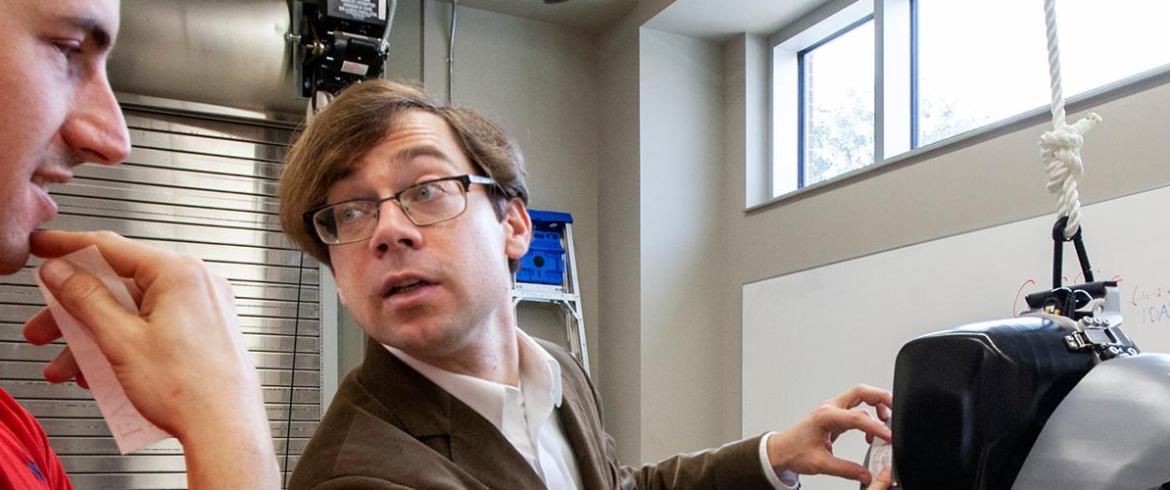
Christian Hubicki, an assistant professor of mechanical engineering at the FAMU-FSU College of Engineering. (FAMU-FSU College of Engineering/Mark Wallheiser)
TALLAHASSEE, Fla. — For Florida State University engineering professor Christian Hubicki, robots aren’t just a tool for the future. They’re a way to understand everything around us.
Hubicki, an assistant professor of mechanical engineering at the FAMU-FSU College of Engineering, will continue that quest thanks to a $750,000 Young Faculty Researcher grant from the Toyota Research Institute (TRI). The grant is part of a larger initiative from TRI that will distribute $75 million to 16 institutions around the country.
“I’m really excited about this because if we crack this nut — and we have, I think, a very promising approach — then that means robots will be able to reason in a way that is really impressive in real-life situations, as opposed to being very rigid in their thinking, or some might say, robotic,” Hubicki said. “If we succeed in this, the way that a robot might think is a lot more adaptive and fluid than you might have otherwise thought a robot was.”
Hubicki’s project is focused on teaching robots the concept of risk.
“I really think that risk is a fundamental unifying concept for anything we want to do in our lives,” he said.
A visit to a farm-inspired him to explore how robots could learn the idea. At the farm, chickens were running around, pecking at their food when Hubicki came along. He tried to pet some of the chickens. They suddenly had a choice to make. They wanted the food. They also wanted to avoid this strange new creature in their space.
“They had to somehow balance the risk of not eating with the risk of this scary-looking professor being too close to them,” he said. “They had to move dynamically and rapidly assess the situation, see what a risk is and try to navigate that in a way where they still did what they needed to do.”
People do the same thing every day, he said. Consider something as simple as a trip to the mailbox, where one might have to contend with unstable terrain, reckless bike riders and weather.
For a robot, risk is anything that compromises its ability to complete the task it has been programmed to do. That could be slipping on the ground or being knocked over by a pedestrian. It could be something like losing power from a battery or overheating by putting too much electricity through its motor. The challenge for engineers is to create the algorithms that allow a robot to constantly evaluate risk in a changing environment.
“How do we take all these very different sources of failures and put it into one equation for the robot to understand?” Hubicki said. “That's what this project is all about.”
Understanding risk is an important part of giving robots the ability to be more flexible in how they complete the tasks humans ask them to do within the parameters we give them.
The Young Faculty Researcher grant Hubicki received from TRI is specifically designed to support promising tenure stream faculty members, enabling them to explore broadly, inquire deeply and address higher-risk, higher-payoff ideas. In YFR projects, TRI invests in the researcher and provides them with the freedom and flexibility to pivot from one direction to another.
“Our first five-year program pushed the boundaries of exploratory research across multiple fields, generating 69 patent applications and nearly 650 papers,” said Eric Krotkov, TRI chief science officer, who leads the university research program. “Our next five years are about pushing even further and doing so with a broader, more diverse set of stakeholders. To get to the best ideas, collaboration is critical. Our aim is to build a pipeline of new ideas from different perspectives and voices that share our vision of using AI for human amplification and societal good.”
